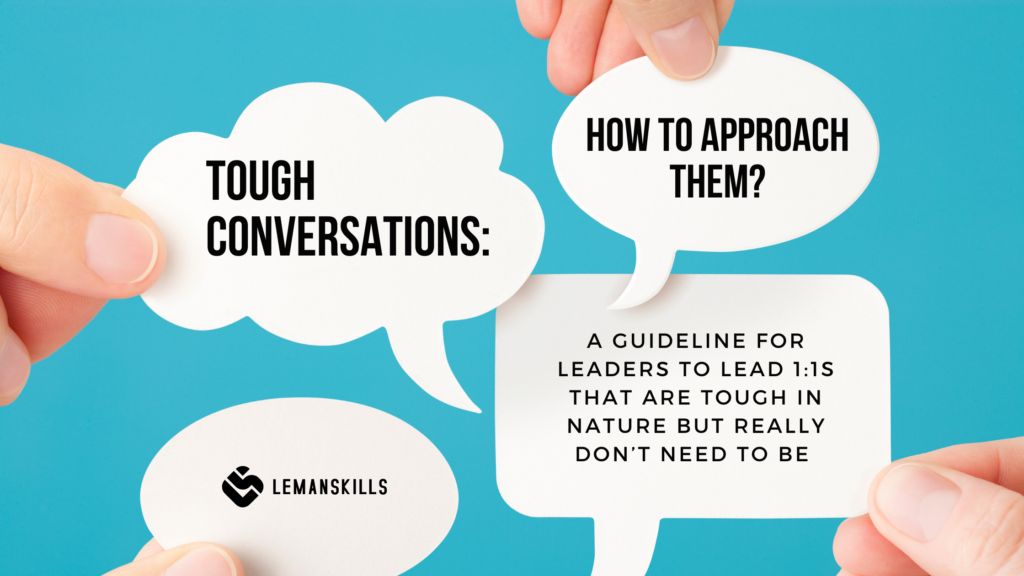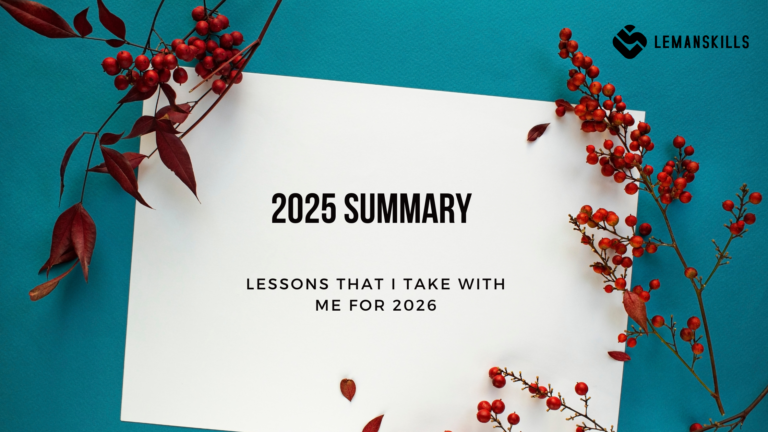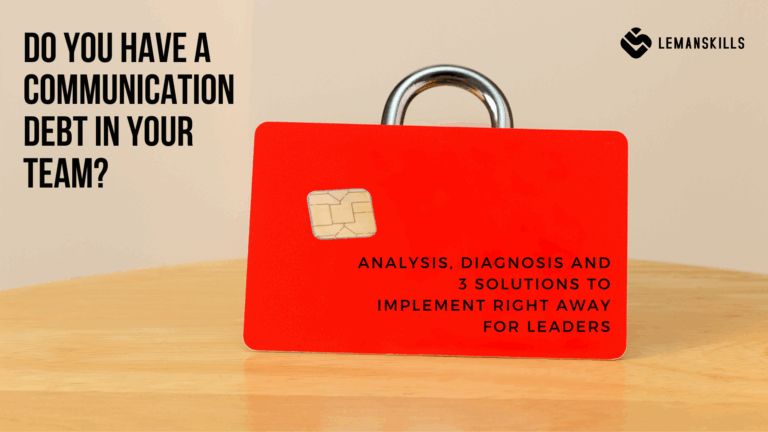As a tech leader, you’re no stranger to challenges—tight deadlines, complex projects, and ever-evolving technology are part of the job. But one of the most delicate challenges you’ll face doesn’t involve code or systems; it involves people. Leading tough conversations with employees is an essential skill that separates good leaders from great ones. Whether it’s addressing underperformance, delivering hard feedback, or navigating team conflicts, these moments can define your leadership.
This guide equips you with actionable tools to lead tough conversations effectively, using a structured approach that combines contracting, Communication Intelligence (CQ), including the Process Communication Model (PCM). Let’s dive in.
When Tough Conversations Are Necessary: Scenarios You’ll Encounter
Before we get into the how, let’s identify the when. Here are common situations where a tough conversation might arise:
- Underperformance: An employee is consistently missing deadlines or delivering work in a quality we agreed on.
- Behavioral issues: A team member exhibits disruptive behavior, such as frequent conflicts with peers or unprofessional communication.
- Career Development: You need to inform an employee that they didn’t receive a promotion or that their role is changing.
- Restructuring: Delivering news about layoffs or departmental changes.
- Personal Concerns: Addressing sensitive issues like burnout, mental health, or personal struggles impacting performance.
Each of these scenarios requires a thoughtful approach to ensure the conversation is productive and respectful. And none of those are easy: there’s no one-size-fits-all approach so it might sound like a hell to a tech leader. But we have some algorytms that you can use to run the meeting with success.
The Framework: Contracting, CQ, and PCM
To handle these conversations effectively, use three elements to have a success no matter what kind of situation you are facing.
- Contracting: Establish clear agreements on three levels—administrative, professional, and psychological. You have more about the contracting itself, the levels and what to do to make sure the contract is fully covered in this article.
- Communication Intelligence (CQ) muscle: Flex your communication style to meet the employee where they are emotionally and mentally. Managing reactions that are always emotional (you like it or not) is our job as leaders: we need to know what triggers which behavior and what to do to overcome or address it when it appears.
- Process Communication Model (PCM) Framework: Tailor your approach to the employee’s personality base for maximum impact. Match the language and way of communication they need, not your favorite ones. That’s crucial for the conversation to be successful: you’re leading it for them, not for yourself.
Part 1: Contracting—Setting the Stage for Success
Contracting involves creating clarity and mutual understanding before diving into the conversation. What are the essentials of 3 levels that are inside?
– Administrative Contracting: Define the logistics. Where will the meeting take place? How long will it last? What’s the agenda? Example: “Let’s meet in my office at 2 PM for 30 minutes to discuss your recent project performance.” Take care of this during and after as well. “What is the deadline to implement what we’re talking about?”
– Professional Contracting: Clarify roles and expectations. Emphasize that this is a professional discussion and its goal is to find solutions, not to blame anybody for anything. Example: “My role is to provide feedback and support you in improving; I would like for your role to share your perspective and be engaged in the next steps we are going to create together during this meeting.”
– Psychological Contracting: Set the emotional tone by creating a space for a person. Acknowledge that the conversation might be difficult but make sure you are focused on the positive outcome. Example: “I know this might be uncomfortable, but I want you to know this is coming from a place of support and wanting to help you succeed.”
Part 2: Flex Your CQ Muscle
Communication Intelligence (CQ) is your ability to adapt your communication style based on the situation and the other person’s needs and preferences. In tough conversations, this means balancing focus with accountability. What are the easiest 3 things that you can do as a leader to make sure you’re using your CQ muscle?
– Listen Actively: Truly hear what the employee is saying without interrupting or jumping to conclusions. Make notes. Paraphrase, check if you understand as your employee intended you to. Don’t assume, ask.
– Acknowledge Emotions: If the employee feels upset, angry or defensive, name the emotion without judgment. Example: “I can see this feedback is frustrating for you.” or “I understand that situation is infuriating.” Don’t underestimate the state, let it be, check what kind of information is hidden below this emotion. Use it in the solution creation phase.
– Stay Calm and Focused: Keep your tone steady and avoid escalating tension, even if emotions run high. I know that’s one of the hardest things to do: most of the time we go angry when the other person is angry. We mirror each other, that’s how our brain is wired. But by being conscious of that, we can stop the automatic pattern and break it by being more mindful and goal-oriented. When you observe something like that, say to yourself: “What is the goal of this conversation? What I want to achieve here?” That kind of reminder is going to take you back to the OK-OK state and continue with more clear view of mind.
Part 3: Tailor Your Approach with PCM—Speak Their Language
The Process Communication Model (PCM) identifies six personality types, each with unique communication preferences and stress patterns. Understanding these types allows you to tailor your message effectively. Here’s a quick breakdown:
- Thinker: Logical, organized, values data and structure.
– Approach: Be clear, factual, and provide detailed explanations.
– Stress Behavior: May become overly critical or perfectionistic, attack others for lack of thinking or logical approach.
- Persister: Principled, dedicated, values integrity and commitment.
– Approach: Appeal to their sense of purpose and principles.
– Stress Behavior: May become judgmental or inflexible, push their beliefs on others, attack for lack of following the process or not having clear values.
- Rebel: Playful, spontaneous, values fun and creativity.
– Approach: Use humor and keep the conversation dynamic.
– Stress Behavior: May become sarcastic or disengaged, not taking responsibility for their actions, blaming others.
- Harmonizer: Empathetic, warm, values relationships and connection.
– Approach: Focus on emotions and personal impact.
– Stress Behavior: May become overly apologetic or withdrawn, making mistakes, people pleaser.
- Imaginer: Reflective, introspective, values solitude and imagination.
– Approach: Give them time to process and reflect before responding.
– Stress Behavior: May become passive or unresponsive.
- Promoter: Persuasive, adaptable, values results and action.
– Approach: Be direct and focus on outcomes.
– Stress Behavior: May become manipulative or dismissive, create drama when they are bored.
Example in Action: If you’re addressing underperformance with a Thinker, provide specific data points about missed deadlines or errors and suggest a structured plan for improvement. For a Harmonizer in the same situation, start by acknowledging their effort and expressing empathy before discussing areas for growth.
The Checklist: Before, During, and After the Conversation
Before the Meeting:
- Prepare Your Message: Write down key points you want to address.
- Gather Evidence: Have specific examples to support your feedback.
- Anticipate Reactions: Consider how the employee might respond based on their PCM personality base.
- Set Intentions: Decide on the desired outcome of the conversation.
During the Meeting:
- Start with Contracting: Clearly outline the purpose of the meeting.
- Use CQ Techniques: Listen actively, acknowledge emotions, and stay alert to the signals and react accordingly.
- Tailor Your Approach: Adjust your communication style based on PCM insights.
- Collaborate on Solutions: Work together to identify actionable next steps and make sure that there’s a full contract attached to the action plan.
After the Meeting:
- Document Key Points: Summarize what was discussed and agreed upon.
- Follow Up: Check in with the employee to ensure progress and provide additional support if needed. Schedule a meeting or reocurring check-ins to make sure that there’re no misalignments between you.
- Reflect on Your Approach: Assess what went well and what could be improved for future conversations.
Real-Life Example: Navigating Underperformance with a Harmonizer
Imagine you need to address underperformance with Sarah, a Harmonizer who values relationships and emotional connection.
- Before the Meeting: You prepare specific examples of missed deadlines but also note her positive contributions to team morale, atmosphere or relations that we build together as a team.
- During the Meeting: You start by saying, “Sarah, thank you for meeting me today. I really appreciate how supportive you’ve been to your teammates lately.” Then transition gently into feedback: “I’ve noticed some delays in your recent deliverables, and I’d like us to work together on improving that.” Don’t use BUT or HOWEVER (these are the killers of this part of conversation).
- Tailor Your Approach: Use empathetic language like “I know things have been busy lately—how can I support you in staying on track? What do you feel would be useful for you right now?”
- After the Meeting: You follow up a week later with a quick check-in email: “Hi Sarah, just wanted to see how things are going with the new timeline we discussed—let me know if there’s anything else I can do to help.”
Final Thoughts: Tough Conversations Are Opportunities
Tough conversations may never feel easy, but they don’t have to feel impossible either. With preparation, understading and adaptability, you can turn these moments into opportunities for growth—for both you and your employees. By leveraging contracting, CQ, and PCM, you’ll not only navigate difficult discussions more effectively but also build stronger relationships and a healthier team culture.
So next time you’re faced with a tough 1:1 conversation, remember this guide—and lead with confidence!
PS. Do you want more content like that? Go and sign into the Leman Leadership Pulse!




